Electrons moving in a wire are not like balls being dropped.
When you drop a ball from a building, it has not much stopping it until it hits the ground. There is only air in the way, which represents a very small influence on the ball over the conditions one might imagine in this thought experiment.
Electrical circuits aren't like that. The mass of the electrons compared to the mass of everything else (protons, neutrons) in the wire is very tiny. But more significantly, the wire is full of electrons. You can't "drop" an electron: it will just hit other electrons. Don't think of a ball: think of a sea of balls. The individual balls aren't really so relevant: usually what we care about is how we can exploit this invisible "fluid" to do work.
The circuit you have drawn, by the way, can't exist. In a schematic, the lines represent ideal "wires" that are infinitely conductive, which means the voltage is the same everywhere in them. There are a lot of ways to explain this, but here's one: take Ohm's law:
$$ V = IR $$
Our "infinitely conductive" ideal wire means "zero resistance". So:
$$ V = I \cdot 0 \Omega $$
Can voltage (\$V\$) be anything but zero volts?
The battery meanwhile maintains ideally a constant 9V between its terminals. If we call the potential at the positive terminal \$V_+\$ and the potential at the negative terminal \$V_-\$, then the battery introduces the constraint:
$$ V_+ - V_- = 9\mathrm V $$
The schematic wire connecting the terminals of the battery also shares the same terminals of the battery, and as above, the voltage across this wire must be 0V, by definition. So we have this system of equations:
$$ \begin{cases}
V_+ - V_- = 9\mathrm V \\
V_+ - V_- = I \cdot 0\Omega
\end{cases} $$
Is there any solution to this system of equations? There is not. This circuit can't exist.
If you attempt to build this circuit with a real wire, that wire will have some small resistance. Let's say it's \$1\Omega\$. Most short wires will be less, but this will keep the math easy. Now the equations are:
$$ \begin{cases}
V_+ - V_- = 9\mathrm V \\
V_+ - V_- = I \cdot 1\Omega
\end{cases} $$
Now it's clear that the current will be 9A.
This should make your thought experiment more clear: in any real circuit, there must be some resistance1 between the battery terminals. If you want to make an analogy to more familiar physical phenomena, resistance is like a friction that acts on electric charge. This is where the energy from moving the charge from a high potential (positive terminal) to a lower potential (negative terminal) goes: it is converted to heat in the resistor.
1: superconductors have no resistance, but they do have inductance. Provided the battery can continue to supply energy, there is no limit to how high the current can become, but the current grows at a finite rate, so an infinite current would require an infinite energy source.

